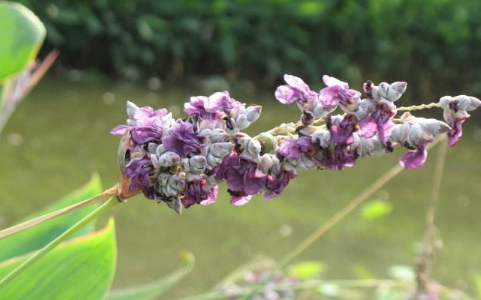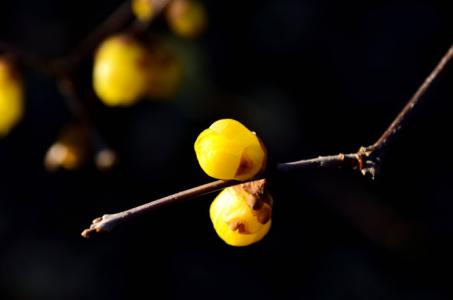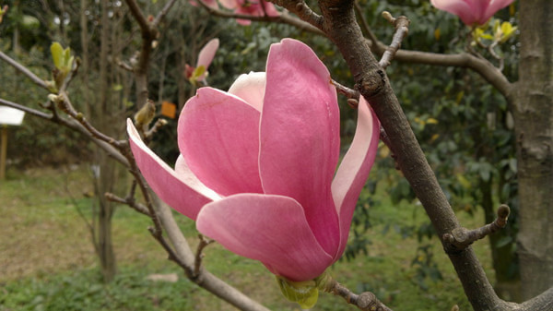Propagation method of Rhizoma Rehmanniae
division propagation
The most common method of reproduction is to reproduce by dividing plants. First, dig out the plants, split their roots, and select the more robust plants for planting. Zailihua can also cut one or two rhizomes from the rhizomes of the mother plant, and plant the rhizomes to grow new plants.

sowing method
Zailihua can also be sown and propagated. Generally, it is collected and sown after the flower matures, which is suitable for spring. After sowing, keep the soil moist and keep the environment warm, and it will sprout in about half a month.
Zaili flower breeding methods and breeding methods and everyone said so much, Zaili flower gorgeous elegant, is very easy to cultivate, we must not miss oh.
The culture method of Zaili flower 1. Substrate
The substrate for cultivating Zaili flowers can be selected from lake silt or pastoral soil, preferably mixed with some organic fertilizer as base fertilizer.
2. illumination
Zaili flower is a kind of plant that likes sunlight very much, but it is also very tolerant of shade. It should be protected from light for about a week, especially in summer, otherwise it will affect the flowering of plants.
3. moisture
Zailihua is an aquatic plant. When planting, it is necessary to use less water in spring to promote rooting and germination; in summer, it is necessary to water a lot to prevent high temperature damage to the plant, and in autumn and winter, it is necessary to control water properly to ensure safe winter.
4. fertilization
Zaili flower cultivation space is small, nutrients may not be enough for plant growth, in addition to base fertilizer, so apply fertilizer twice a month, the concentration should be low, mainly inorganic fertilizer.
Culture method of Zaili flower
Flowers: pomegranate, white peony, rose, hibiscus, june snow, hydrangea, magnolia, jasmine, milan, oleander, hydrangea, pearl plum, gardenia, evening primrose, hypericum, arrow-shaped lotus, gladiolus, amaryllis, begonia, begonia, periwinkle, snake chrysanthemum, calendula, daisy, zinnia, hollyhock, petunia, pittosporum.
Cuttings: chrysanthemum, turtle shell bamboo, rubber tree, begonia, tiger thorn plum, azalea, camellia, white peony, milan, osmanthus, lingxiao, crape myrtle, oleander, gardenia, brocade flower, starwort, cypress, june snow. Softwood cuttings are dragon cypress, metasequoia, buxus, ginkgo.
Rite: Daphne, Calla, Bamboo, Fern. Grafting: rose, camellia, white peony, michelia.
(1) One or two annual grass flowers spring sowing grass flowers, May is the seedling stage. The flowers to be transplanted shall be moved into the tray or seedling cup after 2 true leaves, and placed in a place with sufficient sunshine and ventilation to prevent the occurrence of seedling thin or damping-off disease caused by too dense and insufficient light; the large-flowered purslane with rapid growth and early flowering period can be directly transferred into the planting pot or application site. Direct seeding flowers that do not need to be transplanted, such as Yu Meiren and Hua Lingcao, should be thinned in time. Seedlings should be maintained in sheds or balconies to prevent rain and sun damage. Weak seedlings should strengthen fertilizer and water management, apply dilute liquid fertilizer once a week, avoid strong light for all seasons begonia seedlings, and shade 50%. To be picked to promote branching, such as periwinkle, a string of red, coloredleaf grass, marigold, peacock grass, in more than 10 leaves, can be picked 2 to 3 times. biennial flowers such as carnation, yuppie, caltrop, collard greens, laurel, violets, primroses, and melons are harvested before the fruit dehisces and scatters and stored in a ventilated, dry place
(ii) Perennial flowers
Peony flowers in May, each variety flowering 7~10 days. Peony blossoms in May after peony, flowering 10~15 days, early flowering late flowering varieties have a total flowering 20~30 days. Flowering has big rich, cinnabar judge, Dahongpao, Danfeng, red hydrangea, Xuefeng, rouge point jade, sand gold crown top and so on. In early April, buds were thinned, leaving only one flower on top of each rhizome, and pillars were erected before flowers. Also like peony, before and after flowering, apply fertilizer once. Paeonia suffruticosa drought-resistant fear of waterlogging, open field cultivation rarely watered, such as drought after fertilization before flowering, can be watered to make flowers large and beautiful.
Nasturtium chinensis is sown in April ~ May, germinated in 10 days at night temperature of 15℃, and rooted in 10 days at 13~16℃. Chicken manure liquid fertilizer or 1% potassium dihydrogen phosphate is used before flowering, and 10% cake fertilizer water is used after flowering. Nasturtium like wet avoid waterlogging, to small water frequently irrigation, May 2~3 days 1 water. After budding, the amount of water can be large, the number of times should be small, the sun should be sufficient, the shade should be appropriate in midsummer, and the frame should be erected. Common are the slender, mysterious varieties of Holland. Geranium has tracks, summer rain, tornado, lavender afterglow, hot pink, dancing pink, nano and ice cream, Madon and other varieties. Early spring sowing can be picked to promote branching, cutting seedlings 13~18℃10~15 days to root. Chrysanthemum may cultivate female parent, cut too dense, thin branches, so that fat enough bare feet, 3 to 4 weeks before the cutting or short cut, so that strong new shoots for cutting.
(iii) Bulbous flowers
Freesia florescence has passed, before the fall seedlings will be dug up the ball ventilation shade, indoor ventilation storage to wait for autumn sowing. The flowering period of buttercup has passed, and seeds are collected in time. Mother plants should be placed in a semi-cold and cool place, so that leaves do not wither early, which is conducive to underground development. Gladiolus is suitable for planting balls. Red flowers bloom in May. Dry bulbs are planted in May and flower in July. Gentleman orchid after timely change pots and plants. April ~ May sowing suitable period, at 18~25℃ germination quickly, can be sown in the pot, transplanted after emergence. Lily lilies bloom in may. Dutch lily fertilization in May to promote flowering, early flowering varieties can also flower.
(4) foliage plants May is a good season for foliage plant growth, early move to the outdoor, apply nitrogen fertilizer once every 10 days, generally shading 30%~50%, May ~ August is a good season for cuttage. Ivy, rich bamboo, Guangdong evergreen, creeping dayflower water cut easy to root, change water once a month, 10 days can root, root long before aging transplant. Palm bamboo, Guanyin bamboo, cycad can be sown, rhizome begonia, tiger tail orchid can be inserted into leaves, red banana, dragon blood tree can be inserted into stems, reticulated grass, syncorum, purple goose down, cold water flower can be inserted into leaves.
May is the season for changing pots of foliage plants. The substrates include peat 40%, garden soil 30%, river sand 30%, bromeliads 40%, tree chips, coconut chaff 30%, river sand 30%, ferns 50%, peat 25%, river sand 25%, begonia 40%, garden soil 30%, river sand 30%, asparagus and cymbidium 50%, garden soil 25%, river sand 25%.
(e) Cactus and Succulent Plants May is the growth and reproduction season of cacti. Grafting with measuring ruler (suitable for strong thorn ball and multi-prism ball), wood unicorn, cactus, Wolong column as rootstock. It is carried out at 20~25℃ in sunny days. Cut the scion at 20~45 degrees along the edge, cut the scion at the lower part, the thickness is more than 1/3~1/4 of the diameter, immediately put it on the rootstock, align the vascular bundle of the rootstock, and bind the thin thread longitudinally. Splitting is used for fairy finger and crab claw orchid. It is 15~30 cm higher than the pot surface. Cut wedge incision at the top or side. Cut scion into duckbill shape, insert it into rootstock, fix it with needle, thorn and wood clip, put it in the shade of wind, keep it at 25℃, and cover it.
The cuttings are easy to root at 20~24℃. The winter dormant type cuttings from the middle of April to the first ten days of June, and the summer dormant type cuttings from the last ten days of September to the first ten days of October. Available leaf cuttings, stem cuttings or root cuttings. The cuttings are 5~10 cm long and reinserted after drying. The wounds with white juice should be coated with sulfur powder and inserted into the soil for 1/3~1/2.
Cactus has two ecotypes, one attached to the trunk stone wall, stem flat leaf or slender column, born in tropical rain forest such as epiphyllum, order arrow lotus, crab claw orchid, immortal finger, rat tail palm, measuring sky ruler, etc., like planting in humus-rich, loose, well-drained moist matrix, like semi-shade, high air humidity, avoid direct sunlight, summer to shade, spray more water, every 15~30 days to apply a potassium-containing liquid fertilizer. Another species originated in the desert, gravel, spherical or flat, to seed ball reproduction, suitable for planting in sand, gravel and other low nutrients, good drainage matrix, more light-loving, in addition to summer shading 30%, can be direct sunlight, extremely drought-resistant, growth season to keep moist; apply low concentration fertilizer once a month, in order to grow luxuriantly, more and larger seed balls. Many cacti begin to flower in May. The succulent plants need sufficient sunlight and moist substrate in May, and liquid fertilizer is applied once every half month to promote the growth of branches and leaves.
(6) The woody flower Western Cuckoo ends in May. If it is not well managed, it is easy to die. Pay attention to management after flowering. Rose April to May is the spring flowering period, the first flower should be fertilized before flowering. Rose is very fond of light, light is good, black spot disease is light, we should pay attention to black spot disease, powdery mildew and aphid control. Using 75% chlorothalonil 1000 times and 70% methyl thiophane alternately, the disease control effect is very good. Jasmine may jasmine into the growth period of new shoots, to strengthen fertilizer management, so watering should be frequent and avoid ponding.
White orchids bloom in May. Keep the basin soil moist and not stagnant. White peony leaves big stem thick, like fat avoid thick fat. Hydrangea flowers in May optional year with leaves (2~3 pairs of leaves) branch cuttings. Hydrangea like wet, growth period can not be water shortage, water shortage leaves wilt, quickly recover after watering, but affect flower bud differentiation. Hydrangea flowers like nitrogen fertilizer, nitrogen: phosphorus: potassium 2:2:1~3 fertilizer 2~4 times a month since April, less fertilizer after May, so as not to affect flower bud differentiation. May ~ September shading 20%~50%, vigorous long term with 1000 mg/L paclobutrazol foliar spray, can make it dwarf.
Fingered citron, fragrant round, generation, lemon in May easy to drop flowers and fruits, to prevent fruit drop can be tender shoots to pick the heart, spray 40 mg/L naphthylacetic acid, anti-drop element or 100 mg/L gibberellin 2~3 times. For trees and branches that grow too vigorously, ring or girdle can be carried out at the base of the trunk or branch, with a width of 0.2~0.5 cm.
- Prev

Culture method of preserved plum bonsai
1. Lamei likes the sun, so it is necessary to place the bonsai in a place with light, but be careful not to expose it in summer. 2. Watering wax plum is not resistant to water and moisture, so watering should be careful not to have stagnant water, so that the bonsai of preserved plum can grow healthily, otherwise it may wither.
- Next

four。 Matters needing attention in the maintenance of magnolia flowers:
Magnolia love light, compared with other flowers and trees, Magnolia is cold-resistant, but we pay attention to Magnolia is not resistant to drought, we should pay attention to keep the soil moist. Usually to ensure water supply, often spray water to the leaves, increase air humidity, so as to avoid yellow leaves and fallen leaves. The soil is required to be fertile to ensure the supply of nutrients.
Related
- Fuxing push coffee new agricultural production and marketing class: lack of small-scale processing plants
- Jujube rice field leisure farm deep ploughing Yilan for five years to create a space for organic food and play
- Nongyu Farm-A trial of organic papaya for brave women with advanced technology
- Four points for attention in the prevention and control of diseases and insect pests of edible fungi
- How to add nutrient solution to Edible Fungi
- Is there any good way to control edible fungus mites?
- Open Inoculation Technology of Edible Fungi
- Is there any clever way to use fertilizer for edible fungus in winter?
- What agents are used to kill the pathogens of edible fungi in the mushroom shed?
- Rapid drying of Edible Fungi

